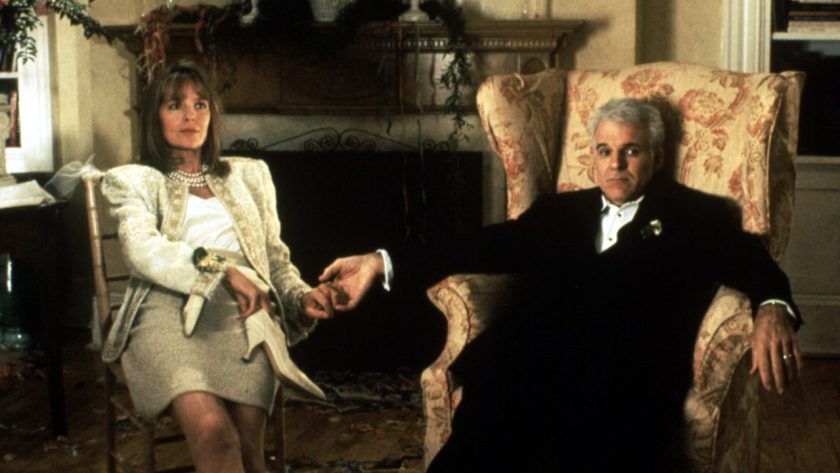First comes the engagement and then comes… a wedding budget breakdown? It might be the least glamorous aspect of wedding planning, but establishing—and sticking to—a budget is one of the best gifts you can give yourself as a couple. As of 2023, the average wedding costs $29,000. If you want to get married in a major metropolitan area, that number rises: according to Zola, the mean cost for a wedding in New York City is $43,536.
So how much should you spend on your nuptials? And how much of that should be dedicated to food, flowers, the wedding venue, and the myriad other expenses that pop up? While there is no one-size-fits-all budget, there are some helpful guidelines to follow as you whip out your calculator. Here, a primer for planning out your wedding budget.
1. Start by determining who will be contributing to the wedding.
Start by deciding who will be paying for the wedding. The old tradition that the bride’s parents should cover the whole bill is no longer nuptial canon. Both families often chip in, and the bride and groom will often help as well. Ask all parties involved how much they are able to contribute and you’ll get your bottom line. Want more specific guidance? Read our guide on wedding cost-splitting, here.
2. How many guests?
With a per-head cost for most catering services, the size of your guest list influences your wedding budget tremendously. “Your venue and your food and beverage are going to comprise some of the largest proportions of your budget,” says event and wedding planner Brianne Garritano. “So, the very first thing that you have to do is figure out how many guests you’re going to be inviting, and then out of that number, what is the probability that they’re going to come? Because sometimes there’s 10% drop-off, and it’s dependent on what time of year (and) where it is.”
3. Set a wedding budget before you start shopping.
Avoid the common pitfall of falling in love with a pricey venue, dream dress, and over-the-top cake before you talk numbers. Start with a budget and then begin exploring vendors within your price range, not the other way around. Though, if you’re finding that your budget and your wedding plans are completely misaligned—your parents insist they must invite dozens of their friends but are only willing to contribute a small amount, for example—it’s time to discuss the reality of how far that money will go and either adjust the budget or the expectations accordingly. But never break the cardinal rule: Don’t break the bank. A lavish wedding is lovely, but even lovelier is starting married life with a healthy savings account.
4. Categorize your wedding budget by percentage.
While there are no hard-and-fast rules about how much you should spend on each category, there are some loose guidelines that can help you from veering off track. You probably don’t want to allocate half your budget to the band, for example—unless you’re okay with delivery pizza for dinner. Many wedding planners and brides find it helpful to create a wedding budget breakdown by percentage.
Need some direction on how to break down your budget? Here’s our breakdown, but you may want to adjust the numbers to account for a wedding planner, a honeymoon, and other additional costs.
Venue and Catering (40%)
A good rule of thumb is to spend no more than 40% of the overall budget on the venue, rental fees, food, and alcohol, combined. Remember, some cities and state taxes are pricier than others, and certain venues have headcount minimums to keep in mind.
Photography and/or Videography (12%)
Allocate around 12% to capture the beautiful memories from your fête. For cost-saving measures, some couples opt out of videography or ask a friend to be their photographer.
Music and Entertainment (10%)
Have your heart set on a particular DJ or band that’s on the expensive side? You can rein in other areas of the budget to make room for killer musical talent.
Flowers and Decor (10%)
Includes bouquets and boutonnieres for the wedding party, centerpieces, and other decorative florals. Professional lighting and other wedding decor pieces belong in this category as well, from candles to table displays and other types of signage.
Wedding Attire and Beauty (9%)
Wedding attire and alterations, accessories, and hair and makeup. How you allocate this category is a personal choice. Some brides might be willing to allocate less money to a cake if it means more money for a dress. Alternatively, you may decide on renting a gown to cut some of the costs.
Ceremony (3%)
Designate 3% of your budget for the ceremony, approximately covering venue rental, the marriage license, ceremony music and decor, and an officiant.
Stationery (3%)
According to Minted Weddings, stationery encompasses everything from engagement announcements, save the dates, invitations, wedding day stationery to thank you cards, and postage. Sometimes couples opt for digital invitations and redirect those funds elsewhere. To save further, address the invitations yourself and reduce calligraphy costs.
Favors and Gifts (2%)
Includes gifts for your wedding party, party favors for all guests, and welcome bags for friends who’ve traveled abroad for your big day.
Transportation Services (2%)
Consider transportation arrangements for you, your wedding party, and any guests who might need it. This also includes the newlyweds’ getaway car and parking expenses. Hosting both the ceremony and reception at the same venue can also be a convenient way to trim transportation costs.
Wedding Bands (2%)
Don’t forget to get your ring insured.
Cake (2%)
Splurging on the cake and all things sweet is an investment we’re more than willing to make.
Emergency/Miscellaneous Fund (5%)
Even the little things seriously add up: Prepare for the unexpected with a 5% buffer for emergencies and “miscellaneous” expenses. Better safe than sorry. But, again, each couple is different, and so their expenses will be, too.
5. Beware hidden wedding costs.
Here are a few common items that brides might not consider ahead of time: beauty treatments, bachelorette party, night-before hotel room, vendor meals (food for your waiters, your planner, et cetera), and overtime costs. In addition, for destination weddings, you may need to take one or two planning trips to your venue—meaning you may need to factor in things like plane tickets, hotel rooms, and gas.
Taxes and tips are oft-forgotten expenses, too. While many gratuities are built into vendor contracts, some are not. Pay attention, and be prepared to tip everyone from the musicians ($15 to $20 per person) to the hairstylists (15 to 25%). If your officiant won’t accept a tip, give a donation to his or her church, instead. Officiants should also receive a thank you gift.



